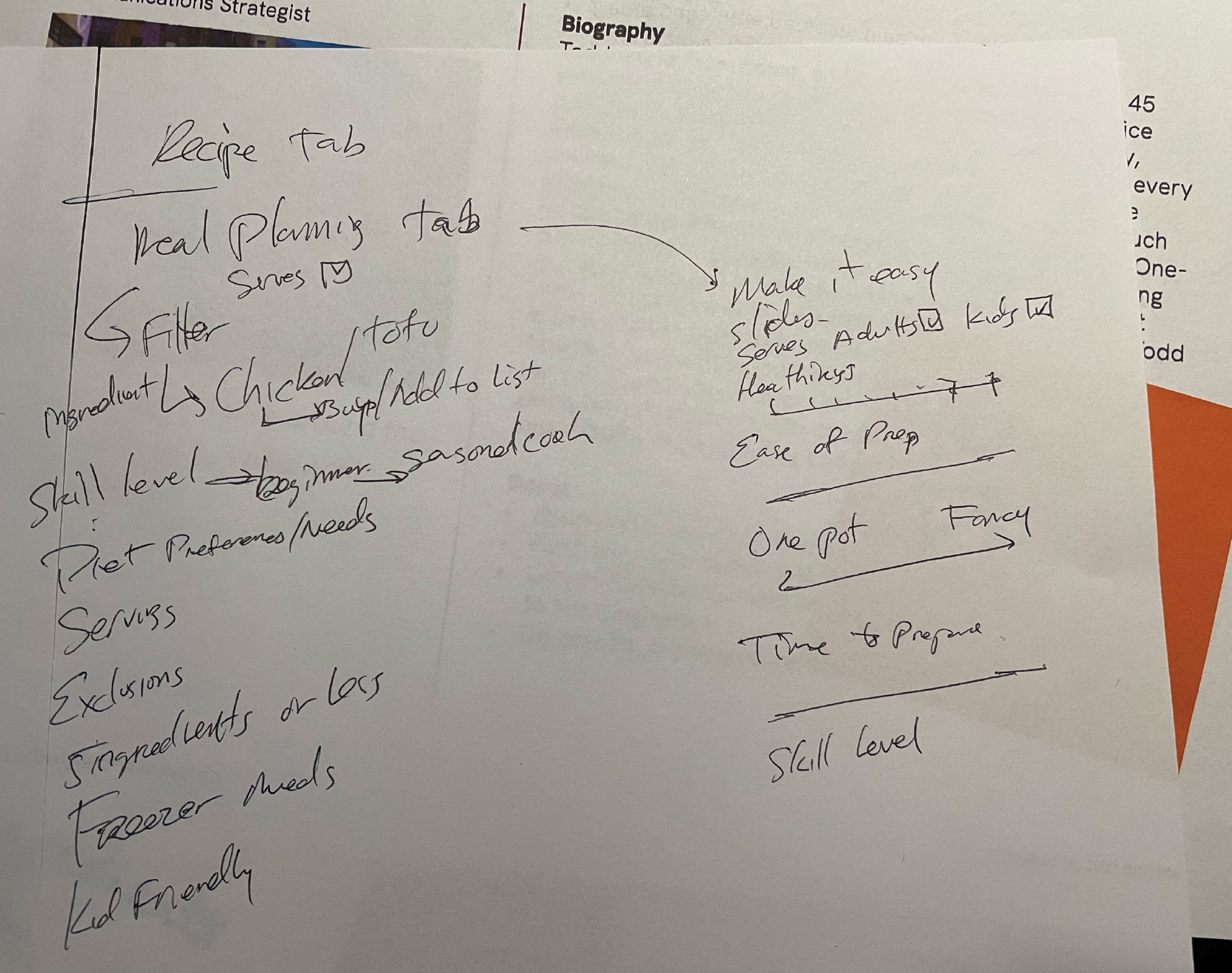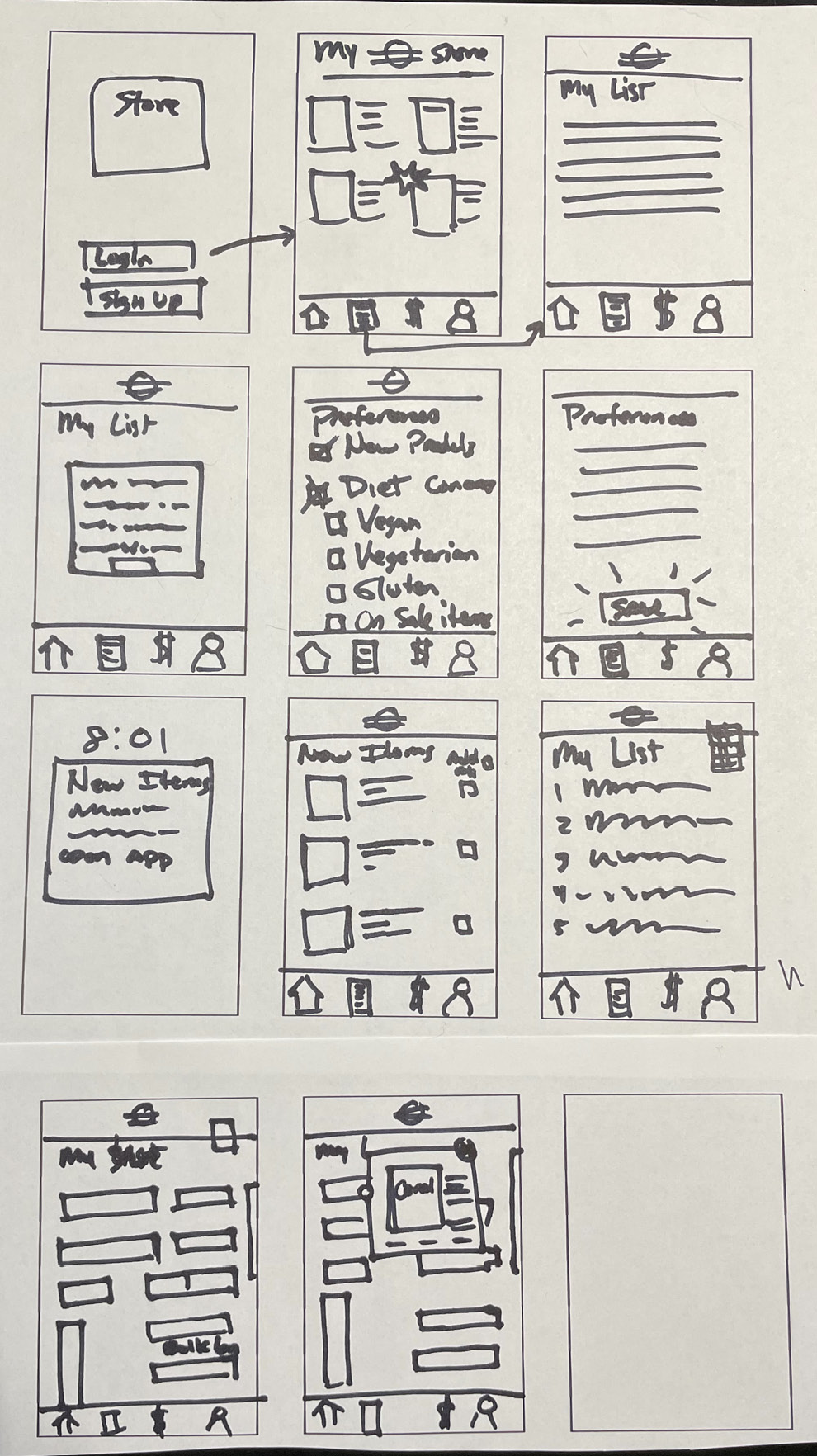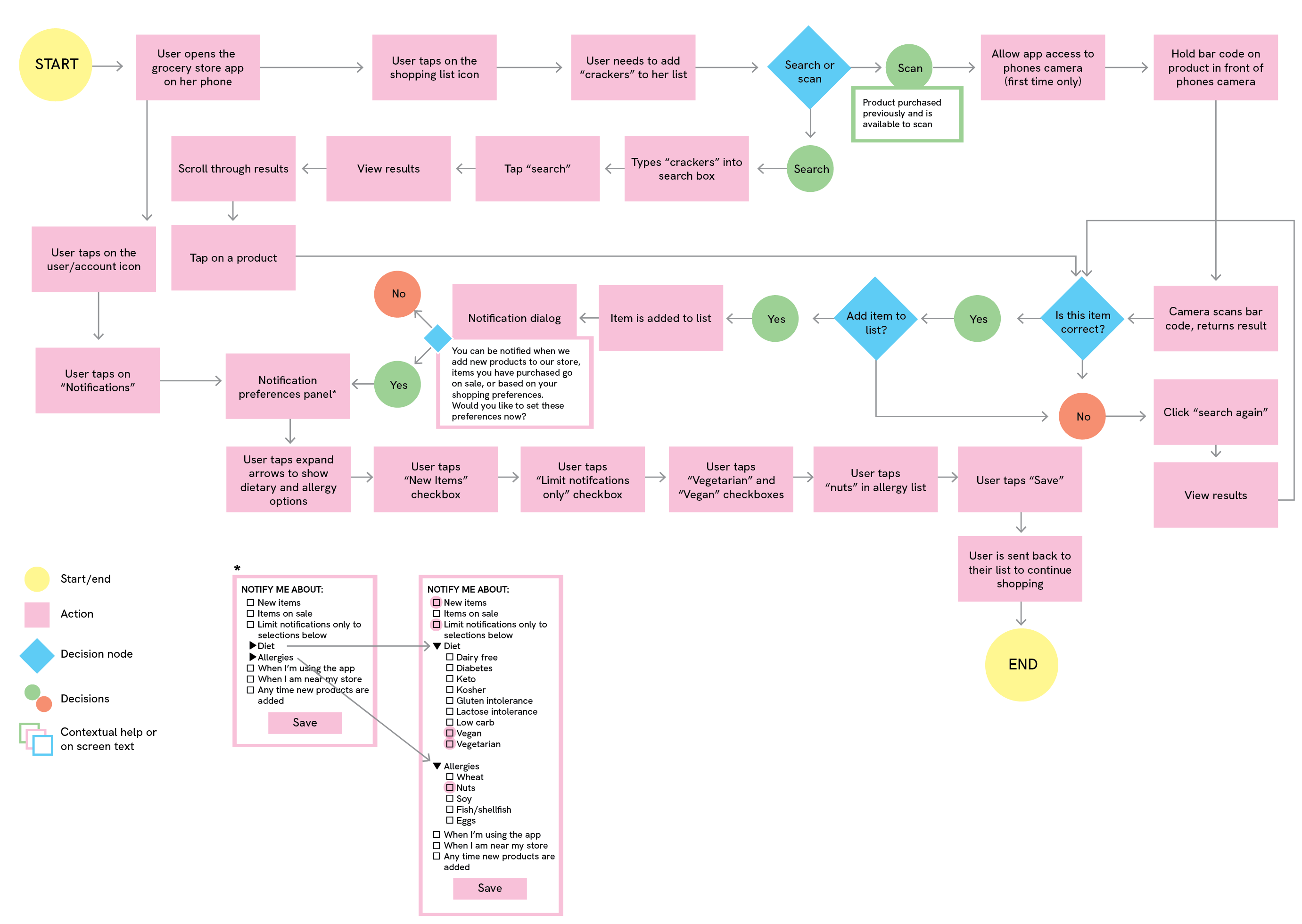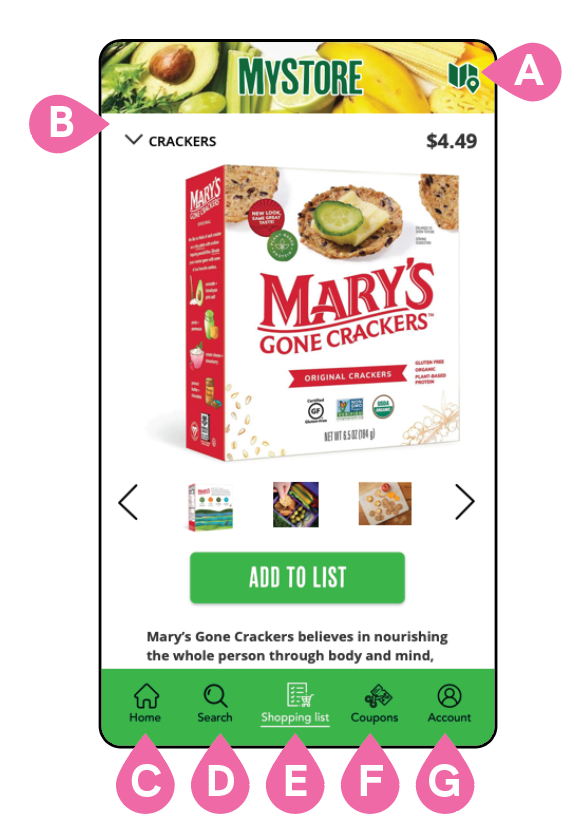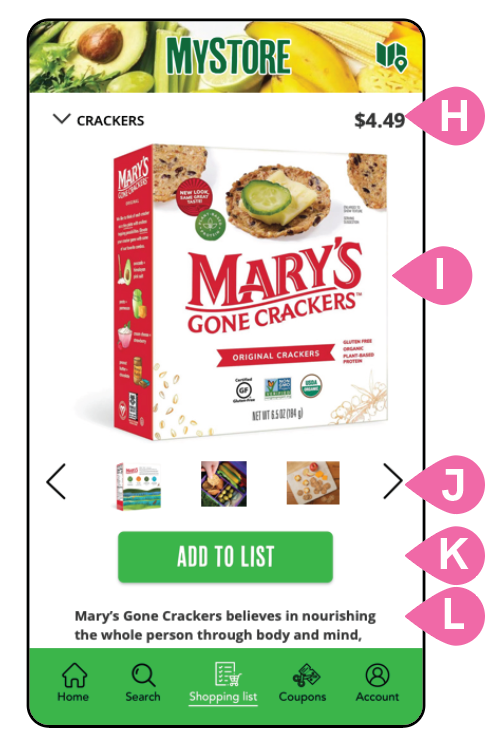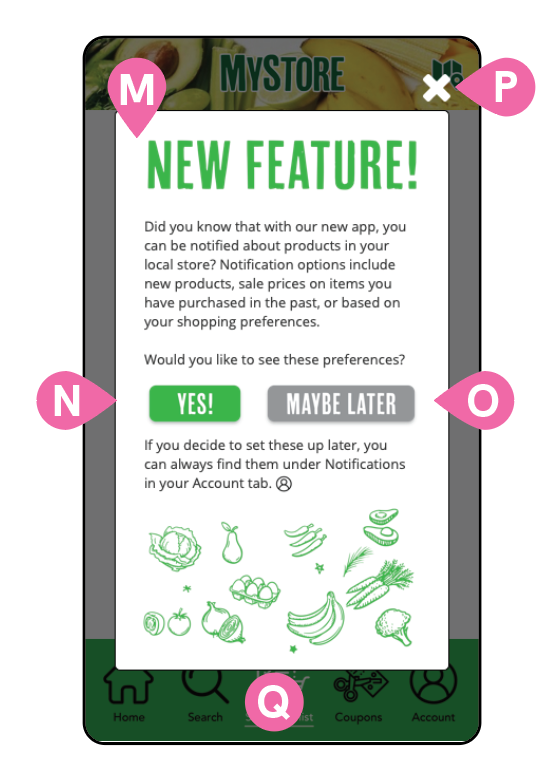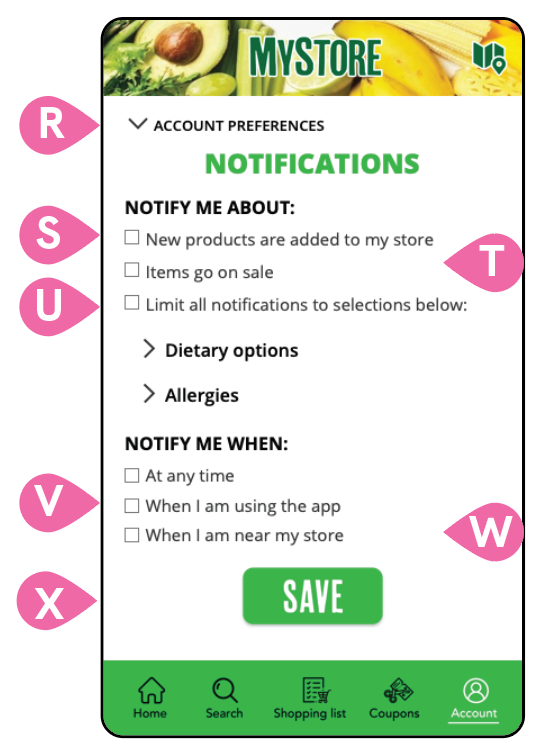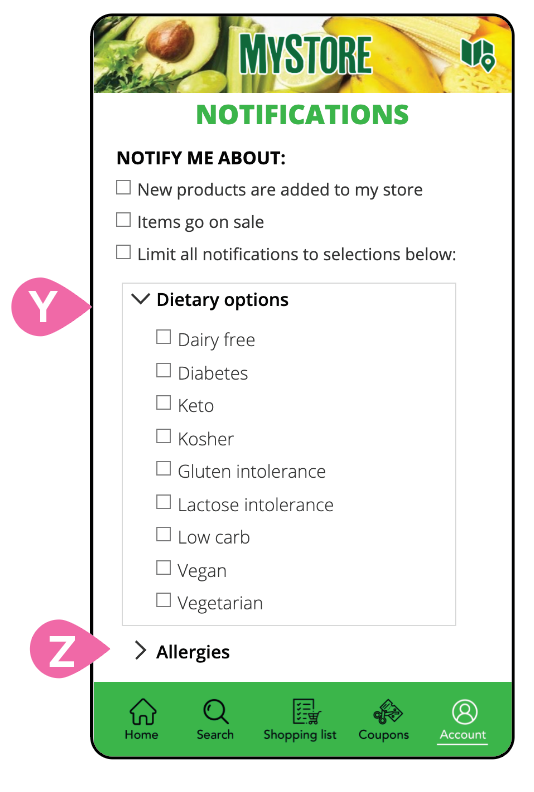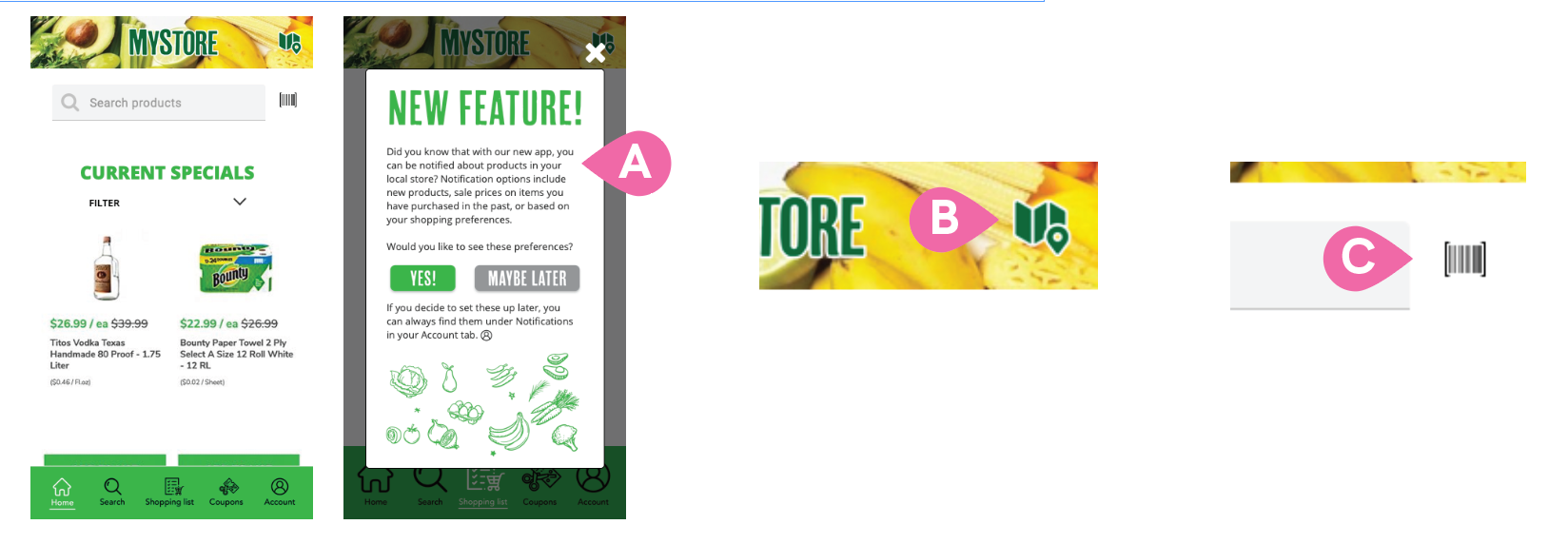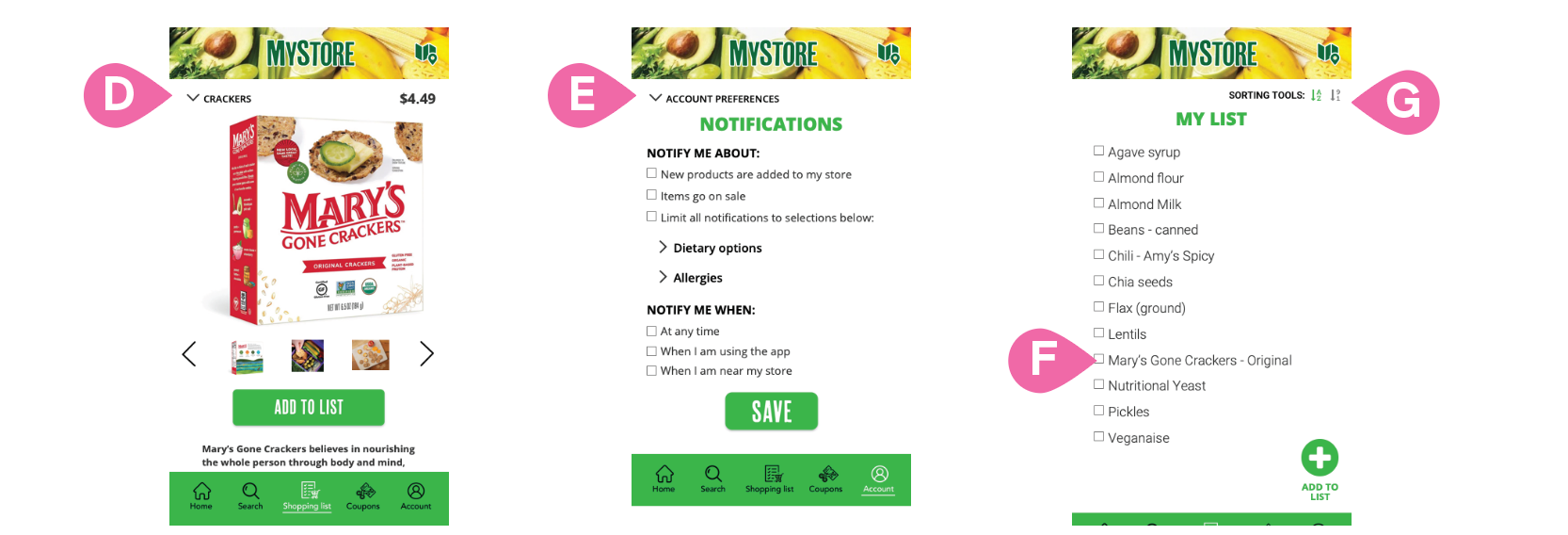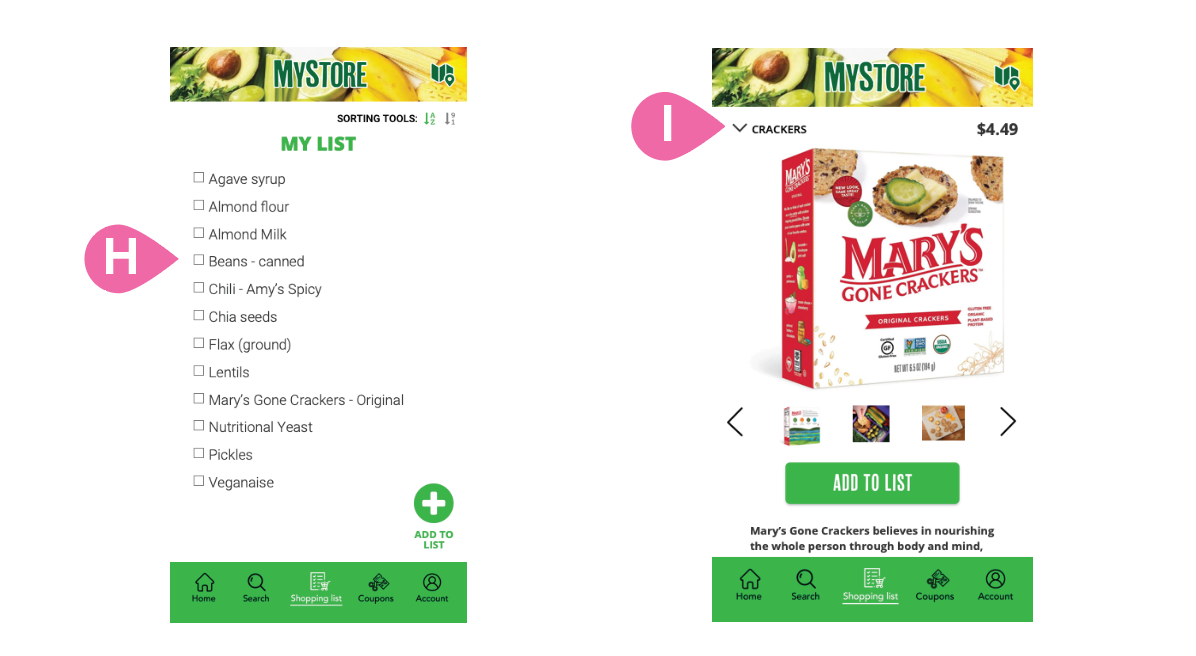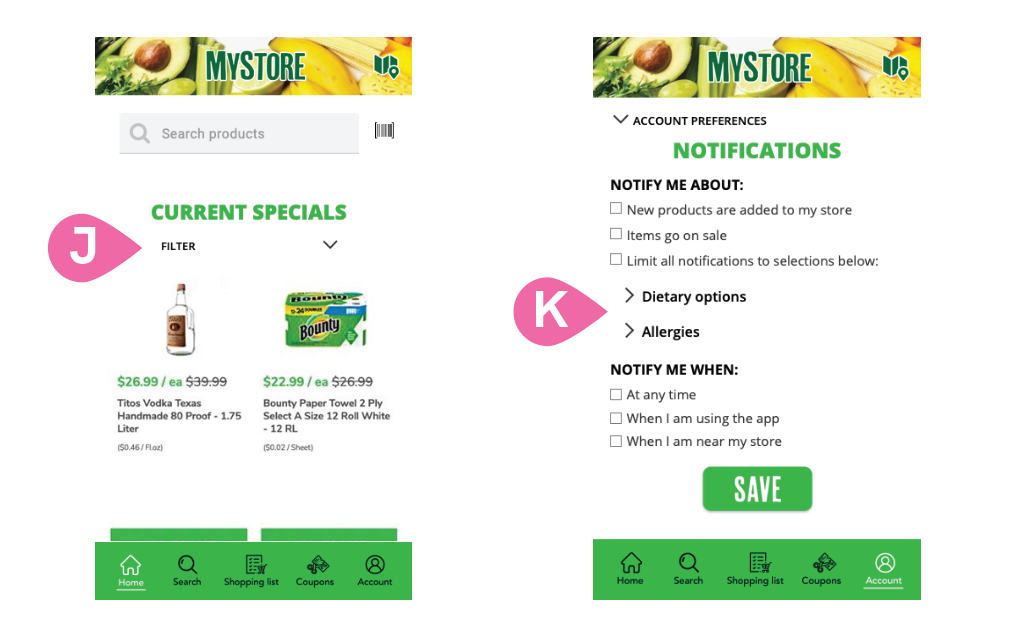Project timeline This project spanned ten weeks from September - December, 2021, beginning with initial user research to clicakble prototype.
Team members Aaron Thomason, Jillian Santos, Alice Titus, Jinhe Zhu, Kaylene Holvenstot, Michelle Gale, Ken Worrall, Adrienne Foote, Lacy Ramos
Project Summary The focus of this project is to create a unique way to add value to a grocery store shopping app. After talking to users, a couple of ideas surfaced. This is the result of one of those items, from concept to digital prototype.
Competitive Analysis
| Competitor 1 - Safeway | |
|---|---|
| Product | Safeway Mobile App |
| Describe the purpose of the product | Get deals, coupons and rewards with $300 in weekly coupons in-app. Arrange curbside pickup or delivery. |
| List the main features of the product (at least 3) |
|
| Why would someone choose this product? | With an emphasis on saving time and money, busy and/or budget-minded users could gravitate towards this app. |
| What are its advantages? | 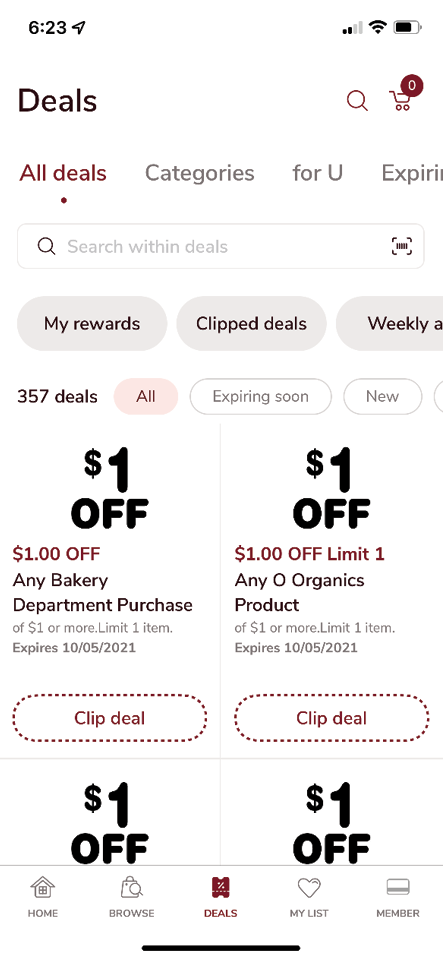 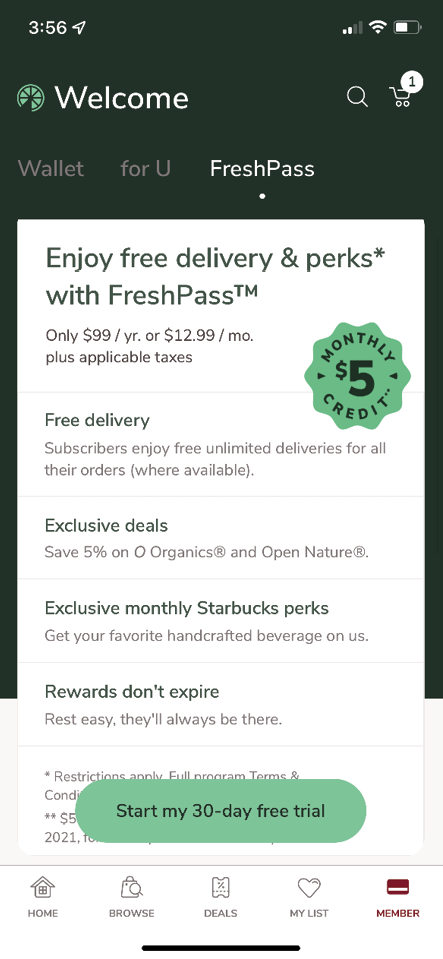
|
| What are the weaknesses? | 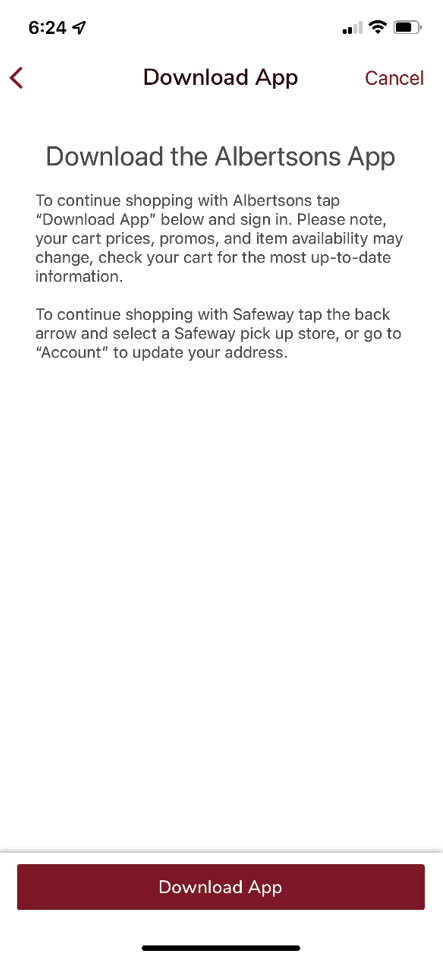 
Generally, app shopping is subject to the same issues as online shopping:
|
| What is customer perception of the product? | 4.7 out of 5 stars on Apple App Store with 469,000 reviews, although the major update Summer 2021 was not received well, with many reviewers asking them to roll back the update to the previous version. |
| Associated Service(s) | Delivery |
| Describe the purpose of the service | Save time by shopping on the Safeway app and arrange to have the purchase delivered |
| List the main features of the service (at least 3) |
|
| Why would someone choose this service? | Someone pressed for time or who was unable to get out and shop for themselves could benefit from this service |
| Competitor 2 - Whole Foods | |
|---|---|
| Product | Whole Foods Market App |
| Describe the purpose of the product | Browse sales, order lunch & dinner, discover products, and build a shopping list within the app. |
| List the main features of the product (at least 3) |
|
| Why would someone choose this product? | 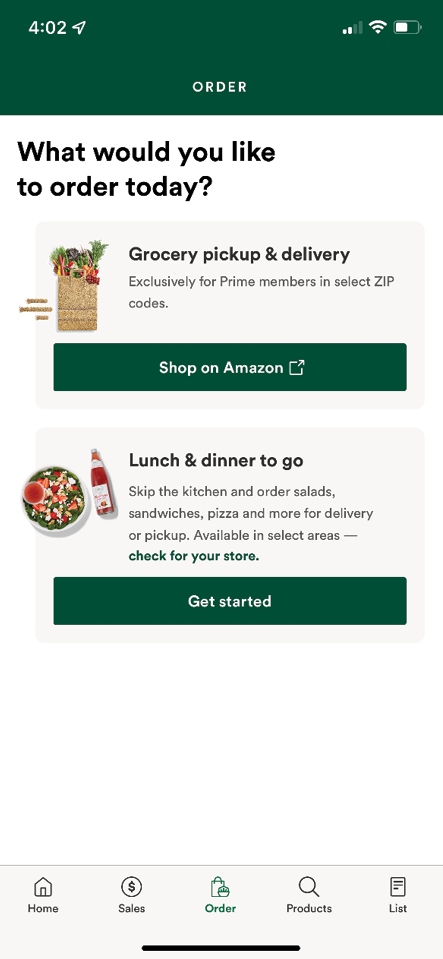
|
| What are its advantages? | 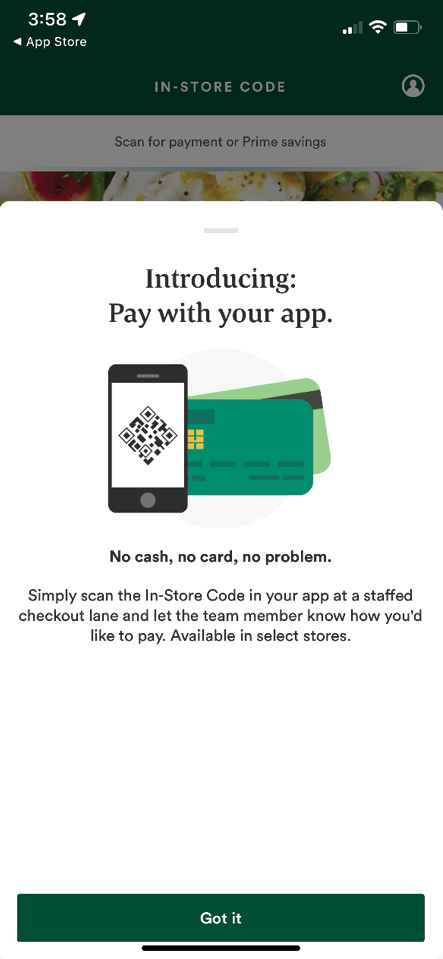
|
| What are the weaknesses? | 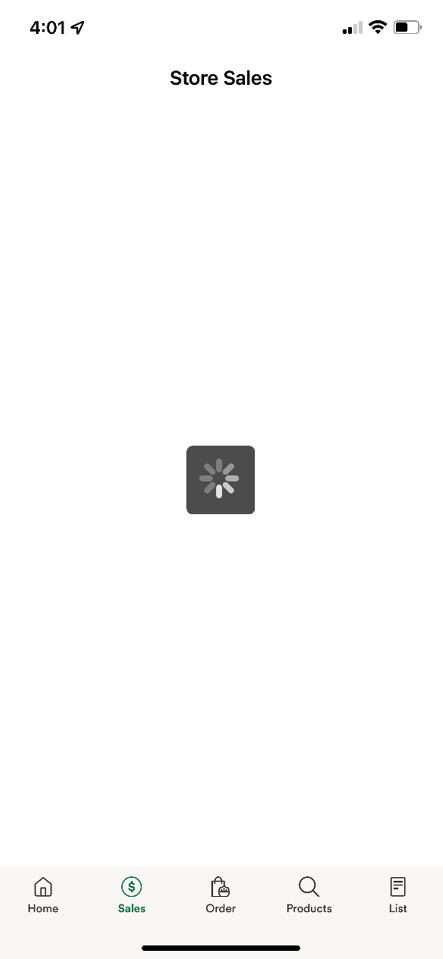
Generally, app shopping is subject to the same issues as online shopping:
|
| What is customer perception of the product? | 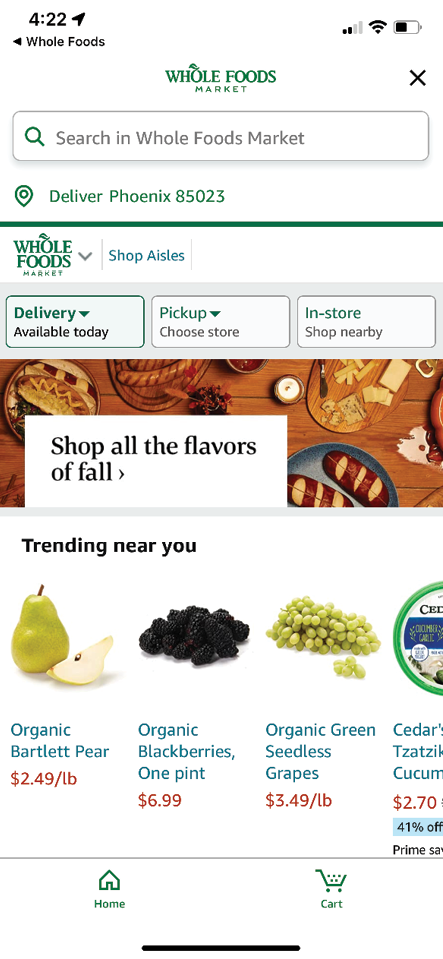
2.3 out of 5 stars on the Apple App Store with 2,400 reviews Users complain of app stability and interface issues, citing it would be easier to order using a computer or directly in the Amazon app, which the Whole Foods app sends shoppers to *Figure 8 |
| Associated Service(s) | Delivery |
| Describe the purpose of the service | Get grocery shopping done on the app without having to go to the store and have the purchase delivered to you |
| List the main features of the service (at least 3) |
|
| Why would someone choose this service? | Shoppers pressed for time or those unable to get out and shop for themselves could benefit from this service, or those who already receive a lot of deliveries from Amazon may decide this is more convenient than going out on their own |
Competitive Analysis - Summary
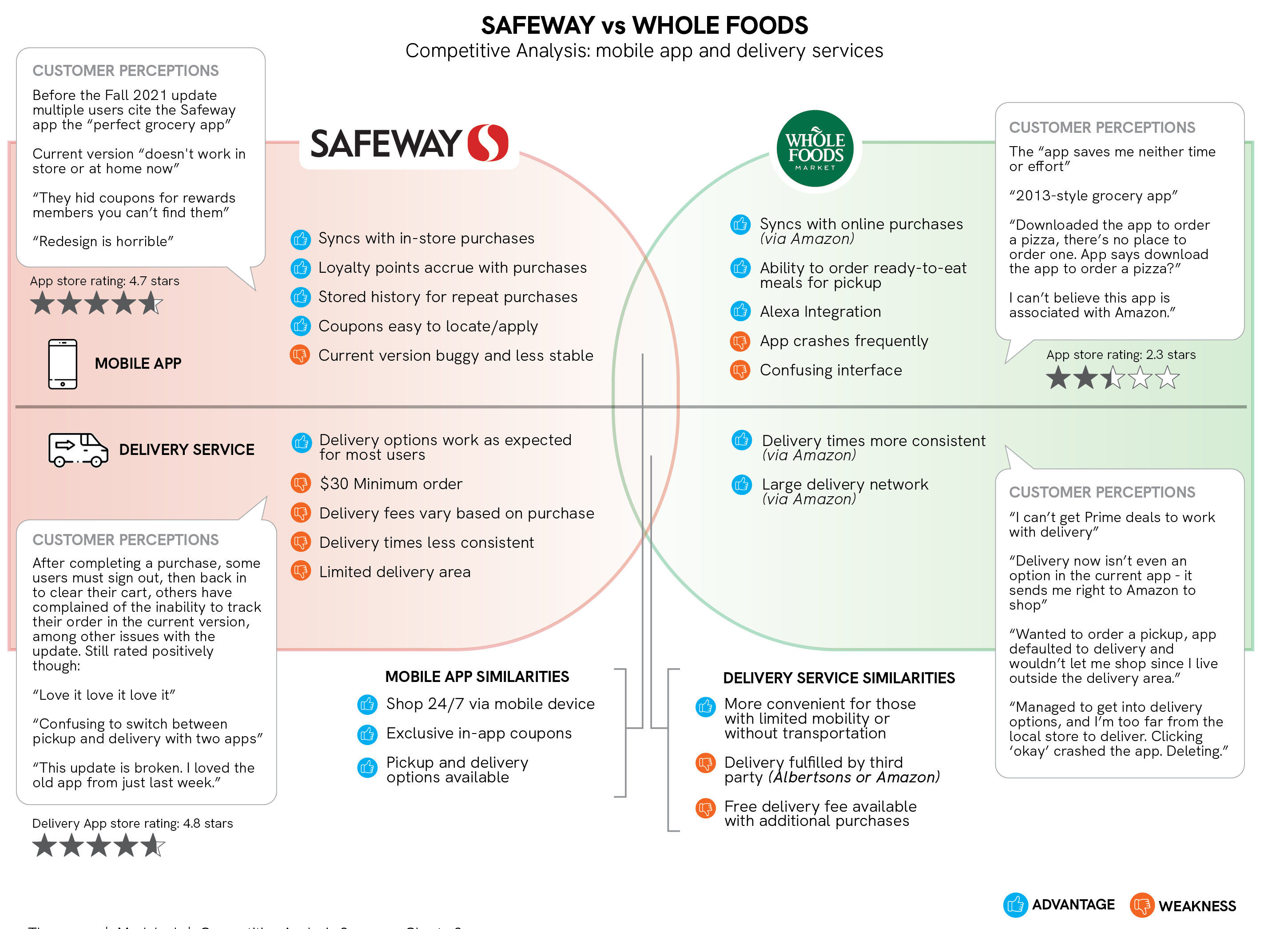
Stakeholder Interviews
Why we talked to stakeholders:
The stakeholders would know what business goals they were trying to accomplish, and the SMEs would be the ones who would know where to find the answers to the problems we were trying to solve for. Knowing that they were being consulted early the process would get buy-in from the corporate level, but also help build credibilty for the process and the UX work. The combination of the two inputs would help put a stronger focus on what the organization would consider a successful product release and get the team closer to a customer-focused product.
Who we talked to:
At the corporate level, we interviewed representatives from:
- The actual stakeholders - whatever group(s) they were from
- Any in-house grocery chain analysts
- Customer service/call center
- Marketing
- Support staff (the IT people responsible for maintaining the app)
- Product buyers
- Human Resources
What we asked them:
- How would you define success as it pertains to the app?
- Does it translate to a percentage of increased online sales? Greater marketing reach? Greater customer engagement on social media? Better able to reach/target customers?
- What is the number one pain point you hope this app solves for you?
Contextual Inquiry
Contextual inquiry performed while user shopped at her local Sprouts store.
Tracy - Sprouts grocery store
- How do you determine when you need to go grocery shopping?
Usually when I’m out of basics/craving something specific/when I decide to make a random recipe and only have most of the items - Do you have a set day and time you always go?
Nope - just whenever I have the time - Tell me about the last time you shopped for groceries online?
During the early COVID restrictions - mainly to follow the mandates. We had to arrange pickup at a different store because our local one couldn’t get them done the same day - Why didn’t you go to the store instead?
That time was due to COVID and stay at home mandates. - How do you decide which sections to shop in?
I know where the products are I’m looking for, but sometimes I just browse a section if I’d been considering a purchase. I usually get the same things every time and know the order things are. Vegan products should be integrated into the ‘normal’ product sections, or put them altogether in one area. It’s inconsistent.
I usually start with bread and it’s dumb becasue it ends up flat in the bottom of my cart. - Do you have a shopping list? Where do you keep it?
Sometimes. I prefer to, but don’t always. In my phone Notes app. - Once you have found your item and put it in your cart, how do you update your list?
I don’t. I don’t delete it because I want to buy it again later. The list is a running list. - Do you deviate from your list?
Sometimes. Just a little - impulse, things that are on sale, or see things and I remember it didn’t make the list. - How do you choose items? Do you prefer a certain brand?
Favorite products first, replacements second, last choice is skip it/buy it later. Prefer certain brands of everything. - Do you look at product sales to determine what to buy?
If its on sale I might buy an extra, but I usually buy what I need. If it something I feel like I will need later and it will keep I will buy it on sale. - What do you impulse buy the most?
Produce. I feel like I should be eating better and it ends up going to waste because I’m too busy to prepare it. - Would you consider getting groceries delivered?
Yes - Why not do it right now?
Because I can do it myself. Also - the app(s) I use take too long to figure out. Also, too much packaging when groceries are delivered. - Do you use coupons in the app?
Not consistently - it’s hard and complicated and don’t remember the password for the app. Something logs me out and its frustrating. - What would make the app better?
The app knows who I am, just scan my number when I check out and apply coupons for things I bought. Why do I have to go save coupons?
Affinity Diagram
Affinity diagram of four shoppers’ interview answers. Collaborated on with Jinhe Zhu, Alice Titus and Jillian Santos
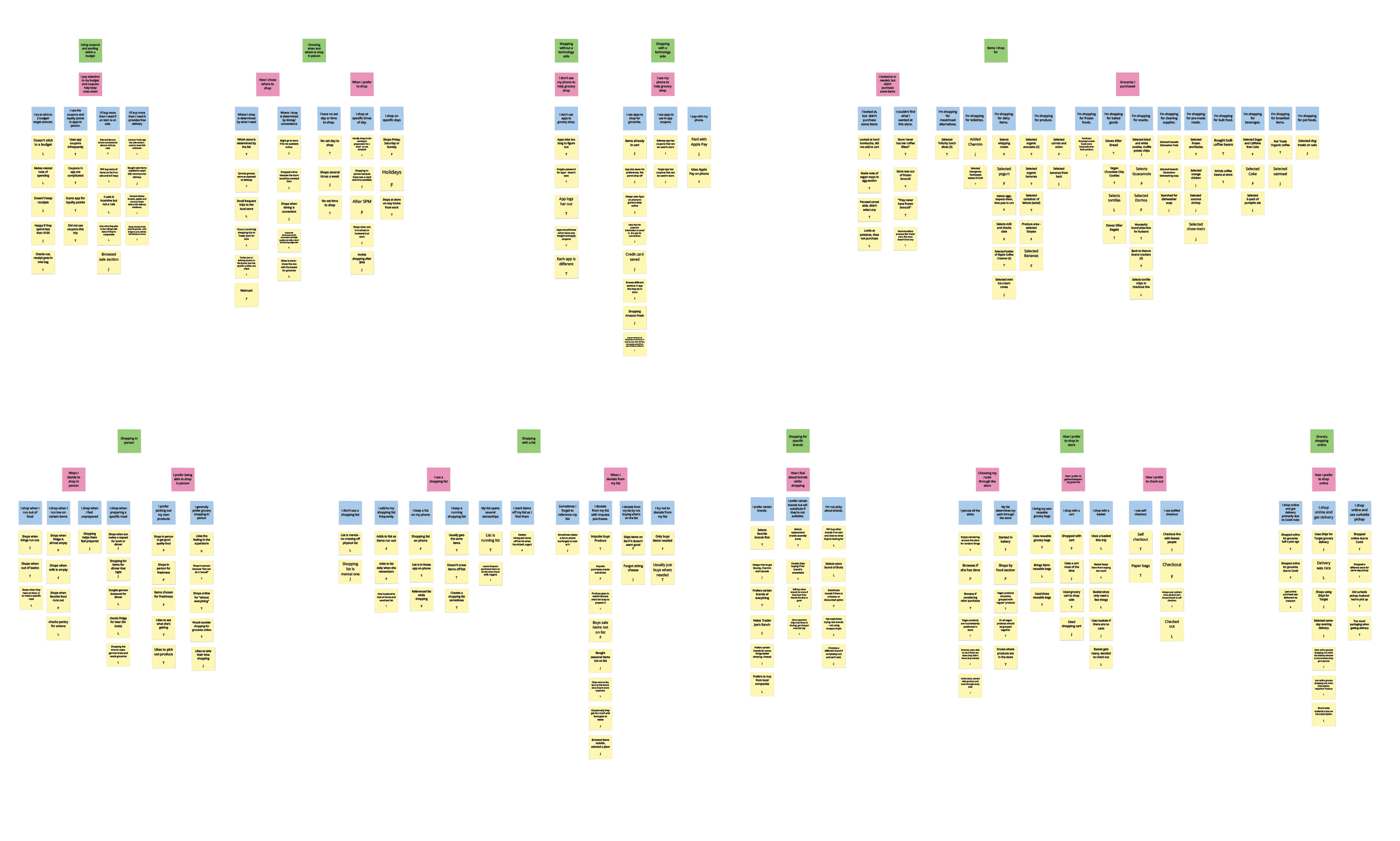
Click the image see the PDF.
Personas
Using the Affiinity Diagram, we created personas to give our shoppers a real face. Our personas were Todd and Valerie.
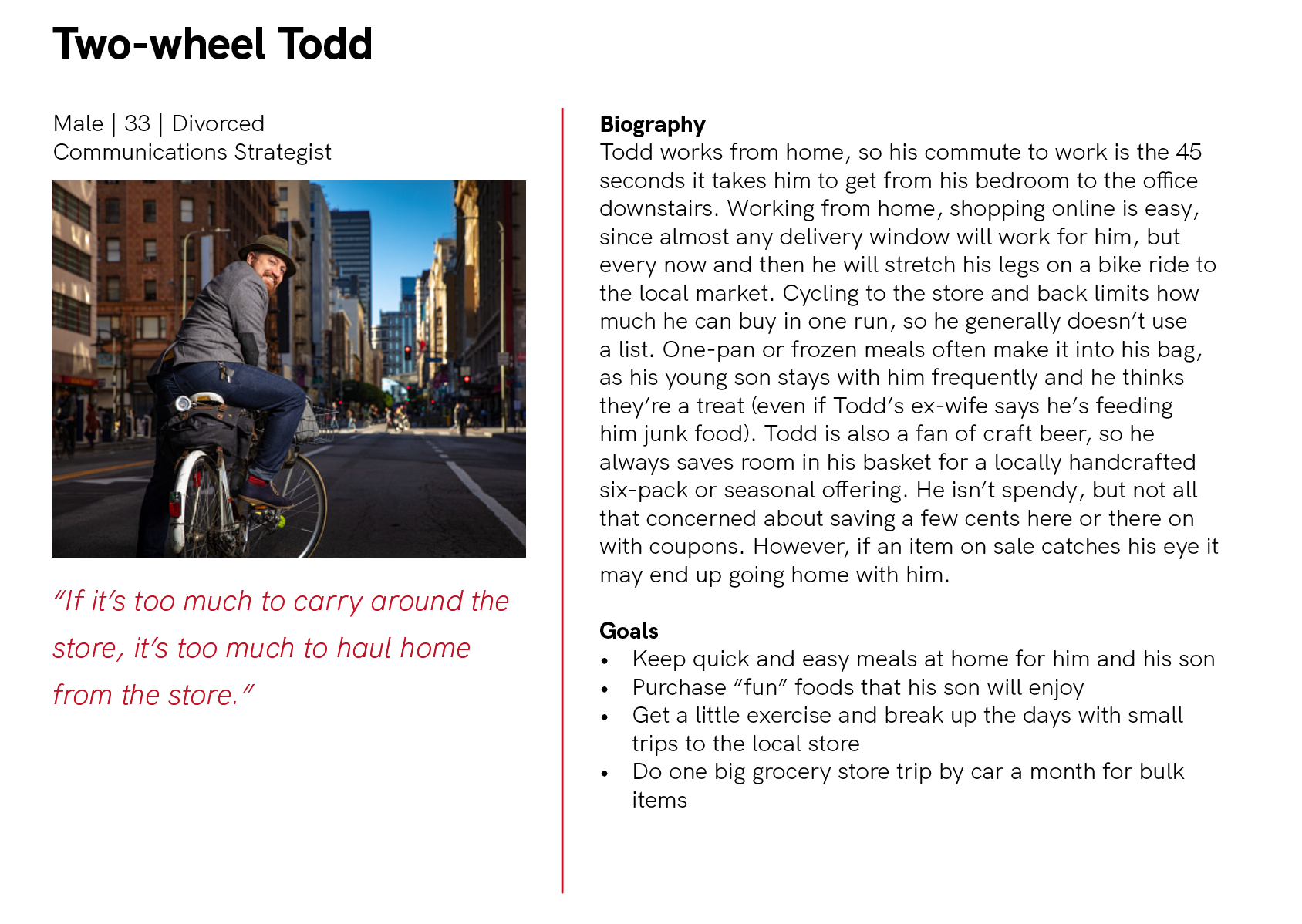
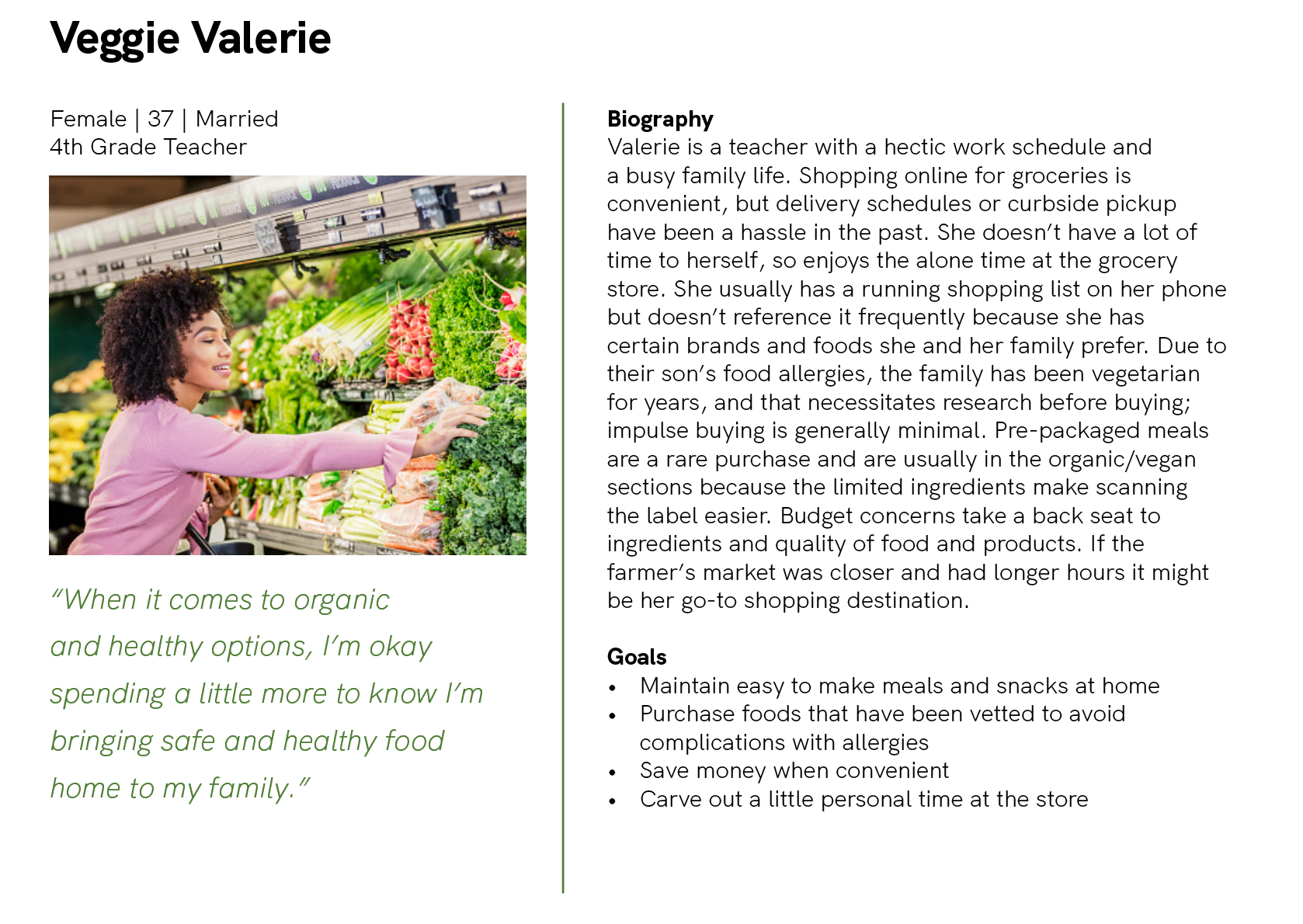
App storyboards
Using our personas, we created scenarios that revealed themselves back in our affinity maps.
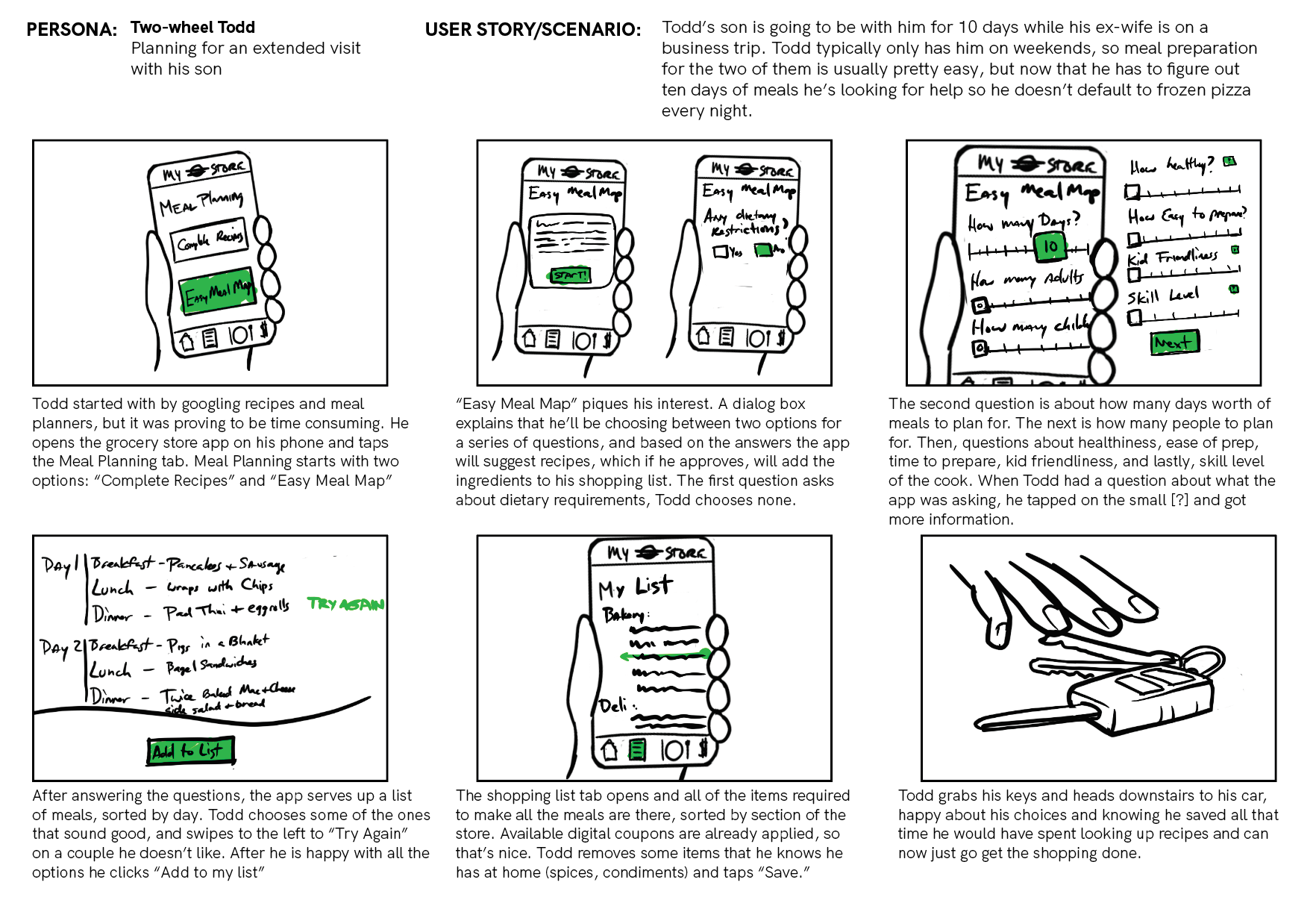
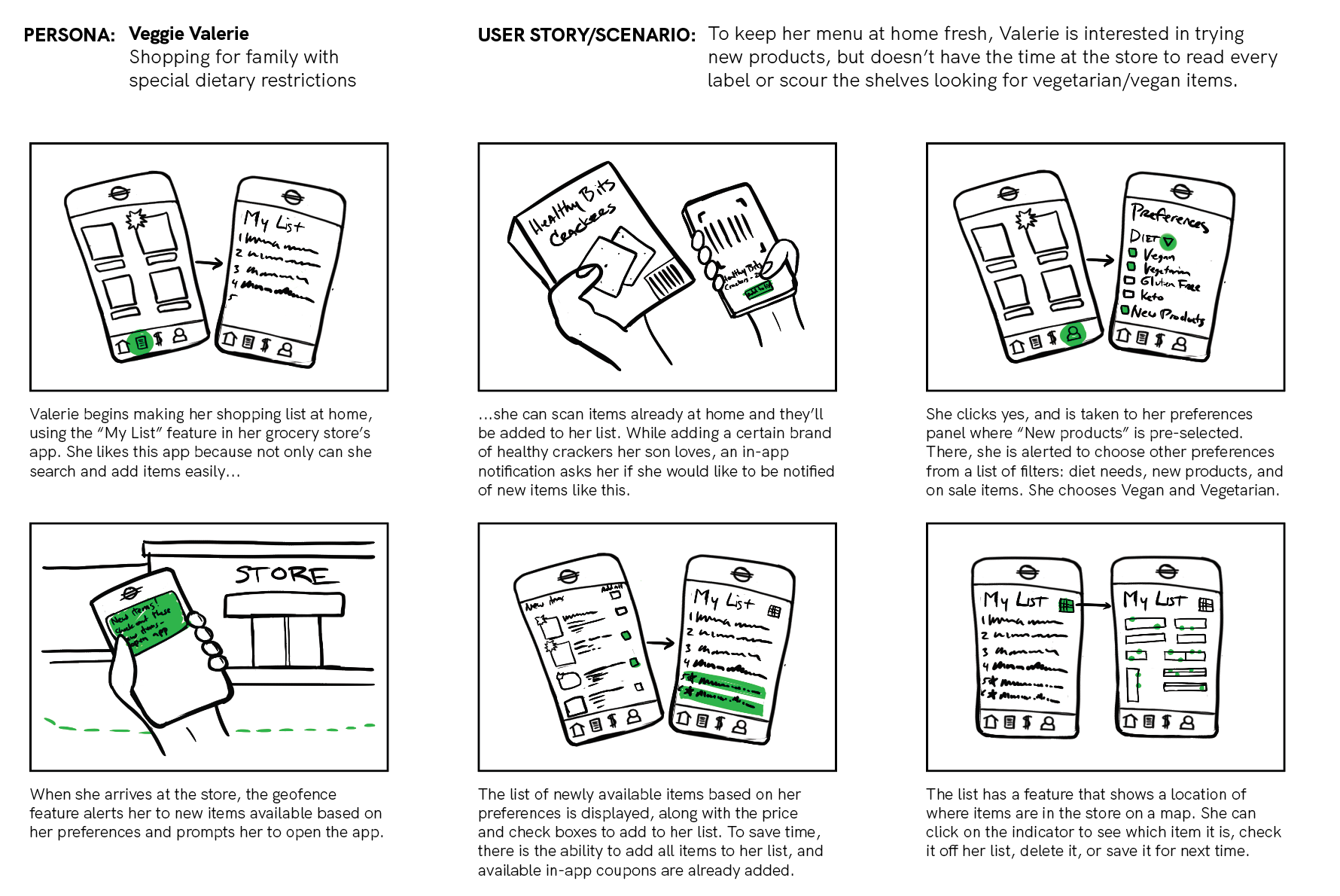
Visioning
UX Visioning panel was tasked to find a way for Veggie Valerie to learn about new items at her grocery store that fall within her restrictive dietary constraints - therough her app.
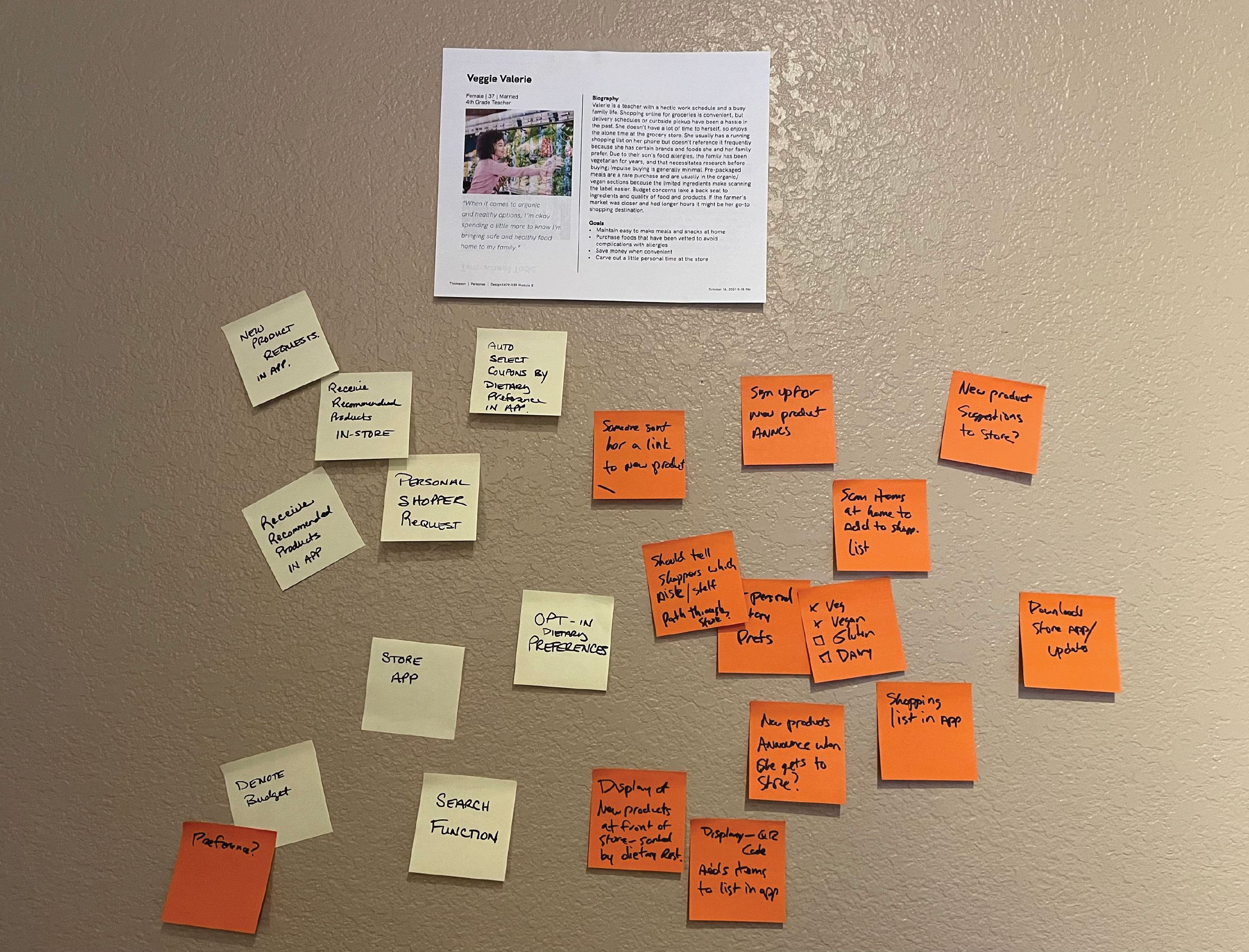
Possibilities shown divided between in-app (out of store) and while at the store.
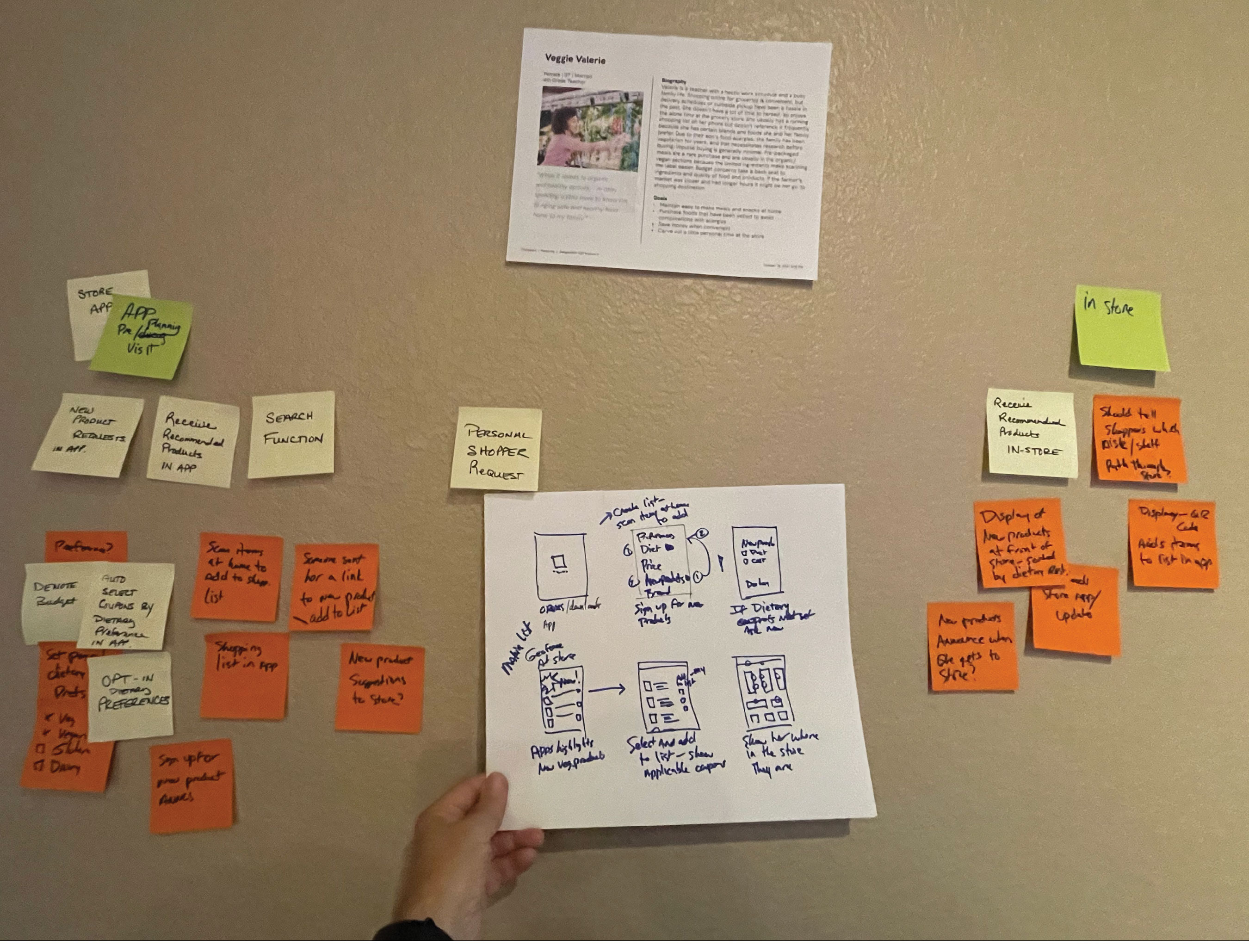
UX Visioning panel was tasked to find a way to help Todd plan and shop for 10 days of meals for him and his son. They immediately focused on a meal planner element in the store app.
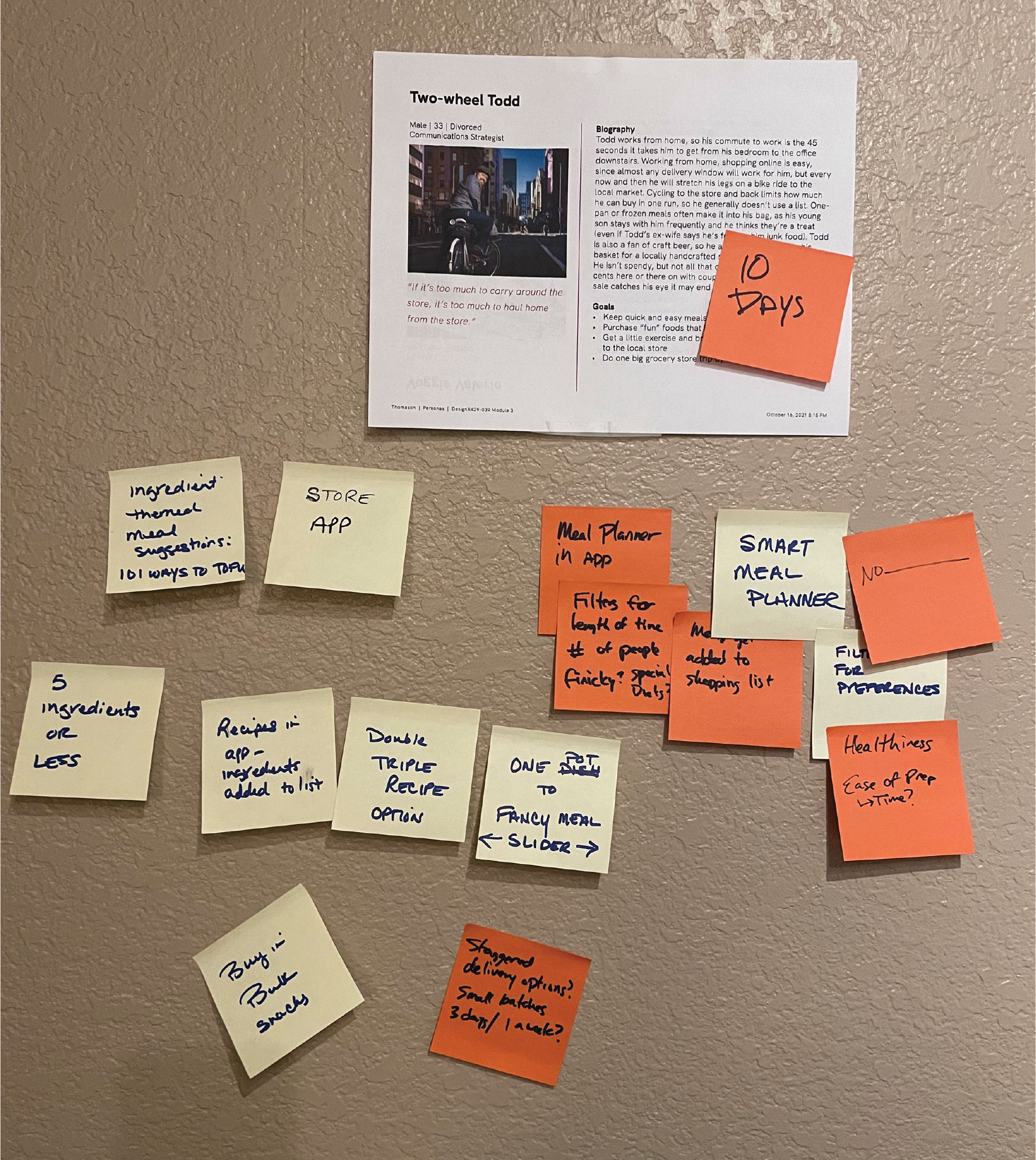
UX Visioning panel thought a slider model could be used to select the dishes that were generated by the meal planner app.
